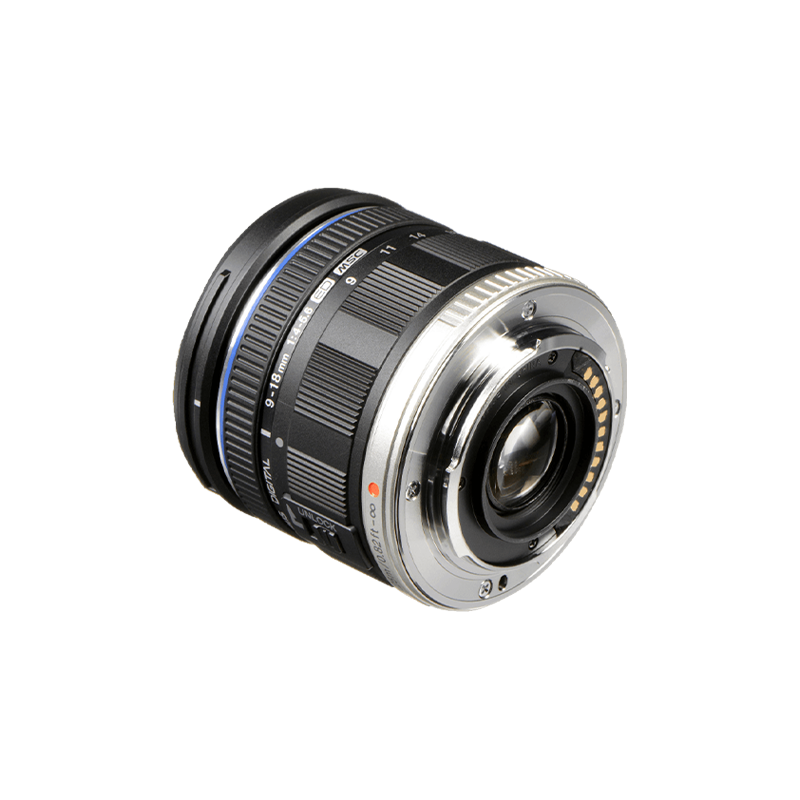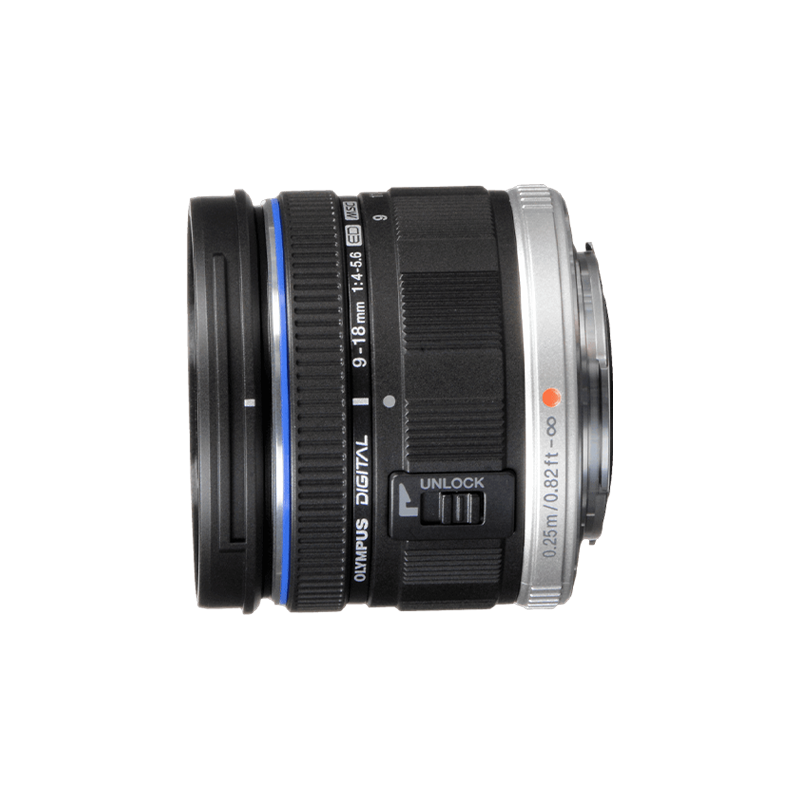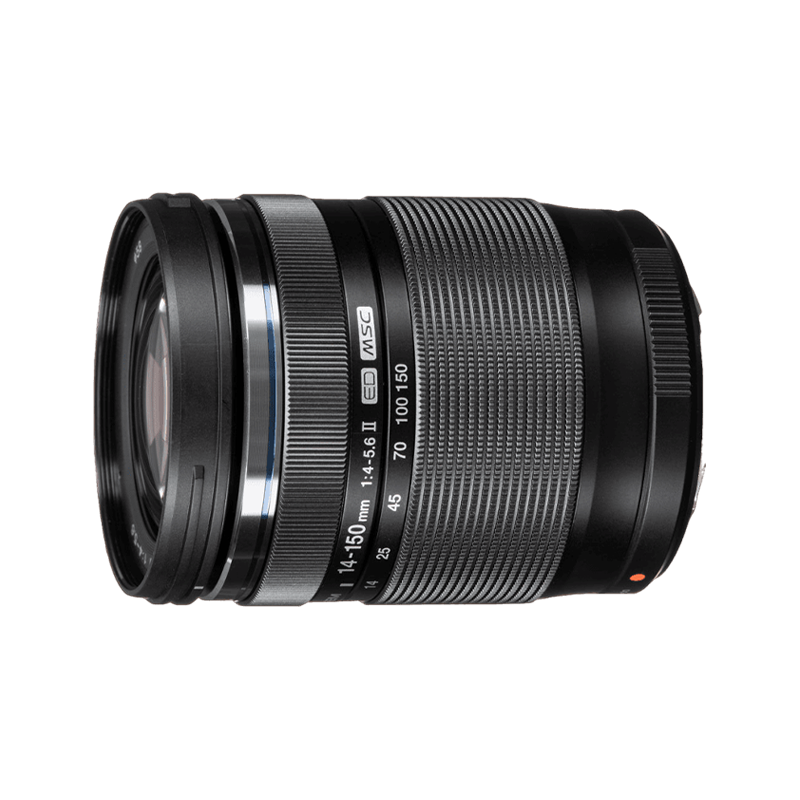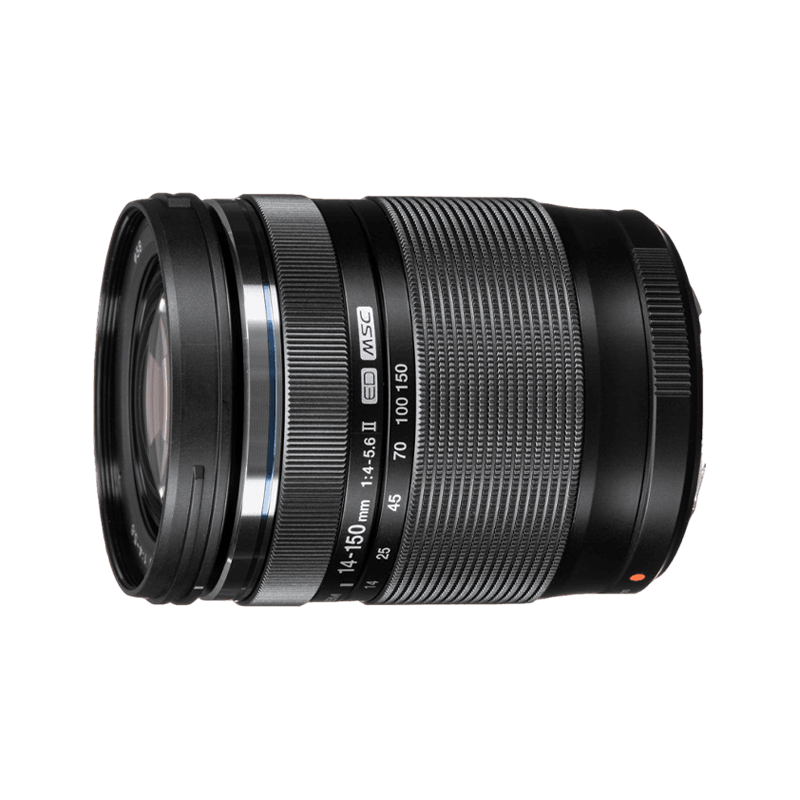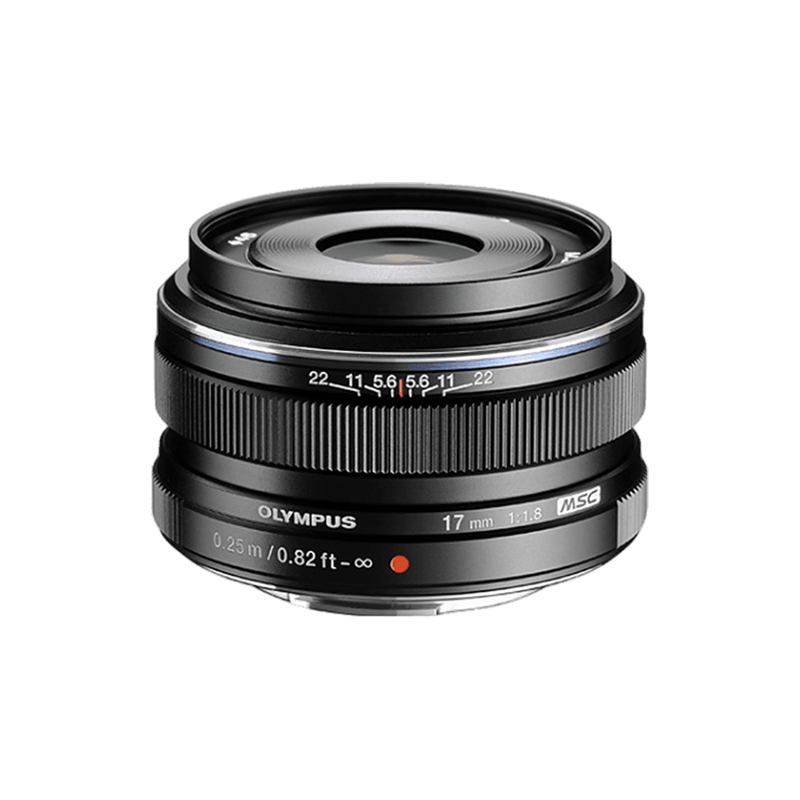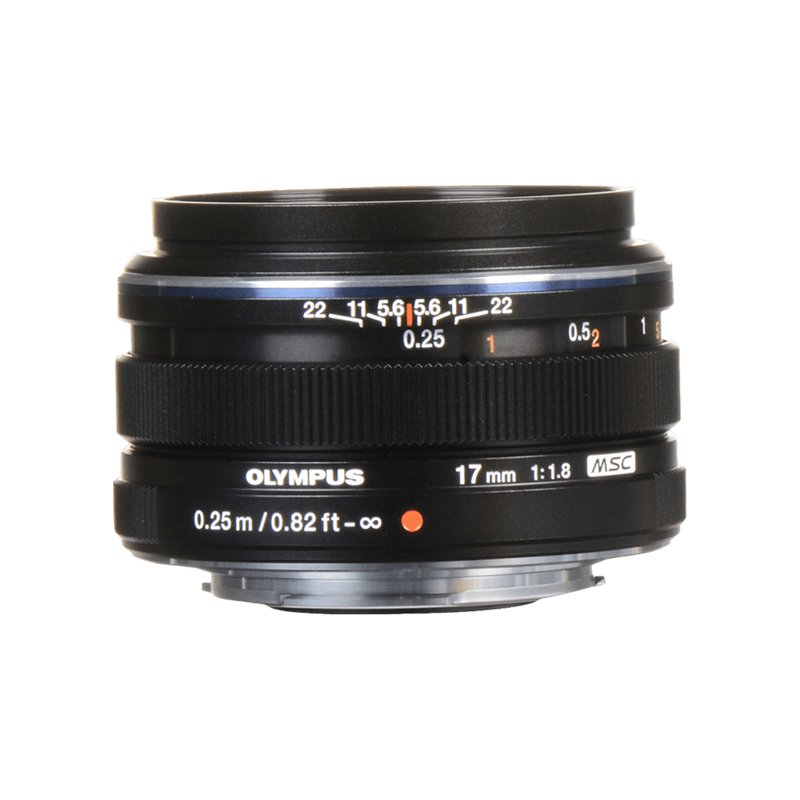OLYMPUS M.Zuiko Digital ED 9-18mm f/4-5.6
Wide-angle zoom lens perfect for landscape photography
This zoom lens is perfect for landscape photos and snapshots. The ultra compact form makes it easy to carry around and brings out the maximum potential of Micro Four Thirds performance. The MSC mechanism provides quick and silent autofocusing for movie and still image shooting
igh image quality achieved by an optimal lens design incorporating advanced processing, manufacturing and measurement technologies.
Ultra-compact, lightweight lens deveoped based on many years of experience in lens design, processing, manufacturing, and measurement.
Lens design technology
Comes equipped with two DSA lenses, a world first. To provide high image quality while keeping the small size, this lens features an ideal, logical lens design in which 2 DSA (Dual Super Aspherical) lenses located in the front capture the 100° wide angle and a dual aspherical lens located on the back correct aberrations.
DSA (Dual Super Aspherical) lens
OM Digital Solutions corp. was the first company in the world to successfully mass-produce Dual Super Aspherical Lens. This lens features an extremely large thickness ratio between the centre and periphery.
HR (High Refractive index) lens
This lens features high refractivity and high spherical aberration correction capability. When combined with ED lenses, it can dramatically reduce chromatic/spherical aberrations.
Lens processing technology
Advanced lens design requirements demand highly-precise manufacturing technology. Olympus has developed an original manufacturing (thermoforming) technology for large aperture DSA lenses to create aspherical glass mould lenses.
Concave meniscus dual aspherical lens
Concave meniscus dual aspherical lens
This technology was also used for the Zuiko Digital ED 9-18mm F4.0-5.6. Olympus is the only company who has highly precise thermoforming technology for over 30mm large aperture lenses.
Dual concave aspherical lens
For the first time, Olympus has created a dual concave aspherical glass mould lens. With a significant aspherical shape, curves at the periphery are tough, making high-level forming technology necessary. Lens surface balancing is strictly controlled, maintaining balancing accuracy on micron-order scale
Lens assembly/measurement technologies
High-precision lens fabrication requires high-precision measurement technology. In order to satisfy design requirements, we make use of our shape measurement technology for DSA lenses and surface eccentricity adjustment technology.
Surface accuracy of dual concave aspherical lenses
The vertical axis shows the manufacturing error from the aspherical shape design values. We have successfully controlled the shape of the part shaped like the bottom of a pan to ensure the required lens performance. We achieved the shape accuracy of 0.1μm (1/10000mm) or less.
Dual concave aspherical lens surface eccentricity
The angle difference between the optical axis of the left side surface (red) and that of the right side surface (blue) is called surface eccentricity. We have developed a moulding system that can precisely control the positional relation of the moulds used to form both side of the lens at high temperatures. This guarantees the quality of the lens.
he newly-developed MSC (Movie and Still Compatible) mechanism provides fast, quiet AF for both movies and still images.
Olympus enhanced the inner-focusing system of interchangeable lenses adopted by conventional SLRs. A screw drive mechanism is used for the drive method for quick, smooth, quiet, high-precision AF (autofocusing). By using the latest optical designs to ensure a minimum number of lens elements for focusing, a lighter lens is achieved. A single lightweight lens is used for focusing in the ED 9-18mm F4.0-5.6.
Adopted a sub-micron precision metallic shaft and feed screw (screw drive) mechanism
The gears have been removed, eliminating operational noise. A sub-micron precision metal axis (shaft) and feed screw are used for efficient, direct driving of the lightweight focusing lens. Enabling faster and quieter autofocusing.
| quipment used | E-PL1 | |
| Shutter speed | 1/1000 sec. | |
| Aperture value | F5.6 | |
| Image size | 4032 x 2688 | |
| File size | 2.26MB |
| Equipment used | E-PL1 | |
| Shutter speed | 1/320 sec. | |
| Aperture value | F8.0 | |
| Image size | 4032 x 3024 | |
| File size | 5.02MB |
| Equipment used | E-PL1 | |
| Shutter speed | 1/500 sec. | |
| Aperture value | F8.0 | |
| Image size | 3024 x 4032 | |
| File size | 8.31MB |
Resource: https://asia.omsystem.com



